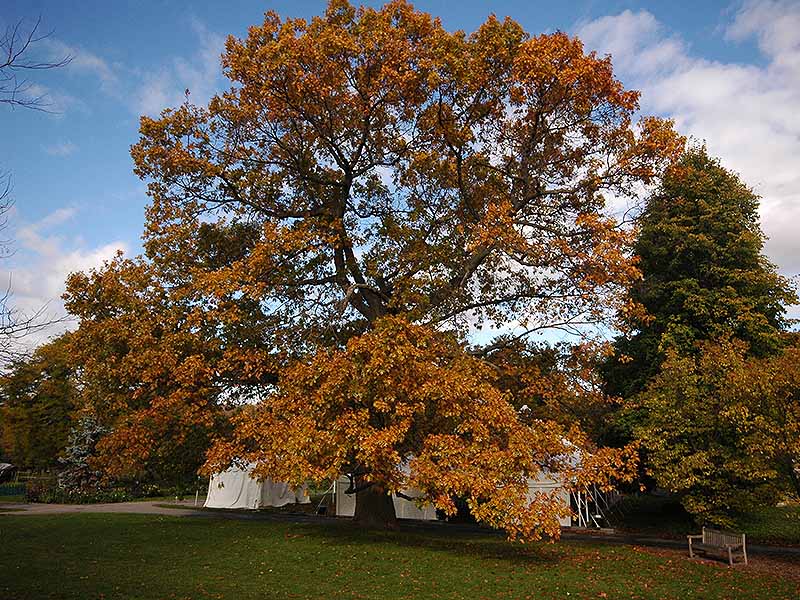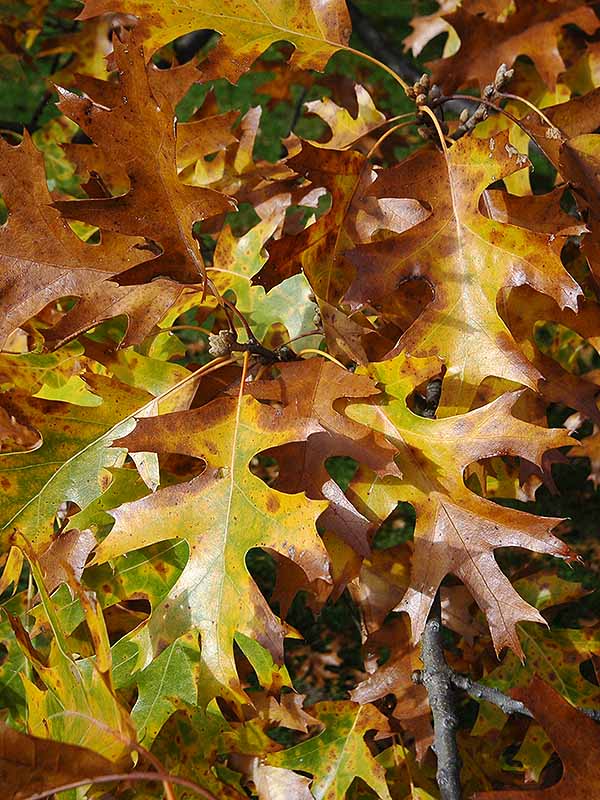
Woody > Quercus > Quercus velutina > Quercus velutina
Quercus velutina
Black Oak
Origin: East-central and eastern United States of America and southeastern Ontario) Canada.
Mike's
Opinion


"
A beautiful tree, well worth planting if conditions permit. It is long lived and full of character with ascending upper branches, glossy leaves and attractive bark. Fruit attracts wildlife. Beautiful examples of the species can be seen along the waterways at the north end of the Pinery Provincial Park in Ontario, Canada.
Michael Pascoe, NDP., ODH., CLT., MSc. (Plant Conservation)
"
| Family |
| Fagaceae |
| Genus |
| Quercus |
| Species |
| velutina |
| Category |
| Woody |
| Type |
| Tree (deciduous) |
| Pronunciation |
| USDA Hardiness Zone |
| 3 - 9 |
| Canadian Hardiness Zone |
| 1a |
| RHS Hardiness Zone |
| H7 - H3 |
| Temperature (°C) |
| (-37)- (-1) |
| Temperature (°F) |
| (-35) - 30 |
| Height |
| 15-20 m |
| Spread |
| 10-15 m |
Photographs
Description and Growing Information
Flowering Period
| General Description |
| A large broad leaved deciduous oak, that makes and excellent shade tree. Pleasant in appearance, with rich green leaves, and an interesting silhouette in dormancy. Drought tolerant, and suitable for acidic soils. This species has been placed on the IUCN Red List as least concern. |
| Cultivation |
| Needs low pH soil, with full sun. Does not tolerate competition and grows better in warmer zones in rich soil. |
| Shape |
| Wide spreading, irregularly rounded, with an open crown. |
| Growth |
| Medium |
| ID Characteristic |
| Thick 2-4 cm bark, appears black with deep furrows cut into squares. Deep yellow inner bark. Shinny green leaves, with yellow petiole. Acorn cup covers half the nut and is fringed at the ends. Has a deep tap root, and wide spreading laterals. |
| Pests |
| Heart rot, nut weevil, oak wilt, root rot, powdery mildew, oak leaf caterpillar, leaf blister, leaf spot, cankers, and oak-pine rusts. |
| Habitat |
| Forests at an altitude of 0-1,500 m. |
| Bark/Stem Description |
| 2-4 cm thick appearing black, deeply furrowed into square pieces. Inner bark is yellow and contains the pigment quercitron. Yellow is visible in the furrows. Twigs are reddish brown and loose their slight fuzz. |
| Flower/Leaf Bud Description |
| Pubescent, 6-10 mm long, sharply pointed. Buds are angled ranging from yellow/gray to grey-white. Oval, conical or ovoid and overlapping. |
| Leaf Description |
| Alternate, simple, pinnate, 10-20 cm in length, and half the width. Normally 7 lobed, but can be 5-9. Shinny dark green above, yellow-brown and rough below. Tufts of hair on veins. A few teeth on the end of each lobe. Petiole is yellow. |
| Flower Description |
| Monoecious, and inflorescent. The male catkins are yellow, pendulous and 10-15 cm in length. Females are found in clusters on a short pubescent stem. |
| Fruit Description |
| Acorn, rusty brown, with short or no stalk. Yellow inside. Cap covers half the nut, and is covered with loosely overlapping fuzzy scales, fringed at the ends. Sharply pointed, alone or paired. 12-20 mm long, and close to as wide. |
| Colour Description |
| Dark green crown with a nearly black trunk while the autumn colour is a dull red-brown. |
| Texture Description |
| Medium. |
| Notable Specimens |
| Pinery Provincial Park, Grand Bend, Ontario, Canada. St. Enoch’s Cemetery, Kingsville, Ontario, Canada. |
| Propagation |
| Acorns must be stratified for a minimum of 60-90 days, at 4-10°C, and mature in 2 years. Can be difficult to transplant due to extensive root system. |



